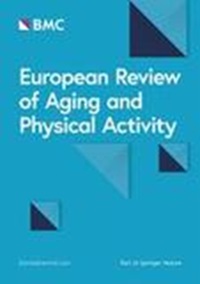Movement patterns during gait initiation in older adults with various stages of frailty: a biomechanical analysis
IF 3.5
1区 医学
Q2 GERIATRICS & GERONTOLOGY
引用次数: 0
Abstract
Gait initiation is challenging for older individuals with poor physical function, particularly for those with frailty. Frailty is a geriatric syndrome associated with increased risk of illness, falls, and functional decline. This study examines whether spatial and temporal parameters of gait initiation differ between groups of older adults with different levels of frailty, and whether fear of falling, and balance ability are correlated with the height of lifting the food during gait initiation. Sixty-one individuals aged > 65 years, classified by Fried frailty phenotype, performed five self-paced gait initiation trials. Data was collected using a three-dimensional passive optical motion capture system, consisting of 10 cameras with the ability to perceive reflective markers, and two force plates. The total duration of gait initiation and the duration of its four sub-phases, the first step length, and the maximum foot clearance during the first step were derived, and compared statistically between groups. Additionally, an association analysis was conducted between foot clearance and fear of falling, and confidence in balance in older individuals. Frail individuals had significantly longer unloading durations, and total durations of gait initiation compared to non-frail older adults. Additionally, they had shorter first step lengths compared to non-frail older adults. Pre-frail older adults also showed shorter steps compared to the non-frail group. However, there were no significant differences between groups for the maximum foot clearance during the first step. Nevertheless, the maximum foot clearance of older individuals correlated significantly with their fear of falling and confidence in balance. Older adults with reduced physical function and signs of frailty mainly display longer duration of gait initiation and decreased first step length compared to non-frail older adults. The release phase is decreased as the double support phase is prolonged in frail patients. This information can guide the development of specialized exercise programs to improve mobility in this challenging motion between static and dynamic balance.不同虚弱阶段的老年人步态启动时的运动模式:生物力学分析
对于身体机能较差的老年人,尤其是体弱的老年人来说,步态启动是一项挑战。虚弱是一种老年综合症,与疾病、跌倒和功能衰退的风险增加有关。本研究探讨了步态起始的空间和时间参数在不同虚弱程度的老年人群体中是否存在差异,以及对跌倒的恐惧和平衡能力是否与步态起始时抬起食物的高度相关。根据弗里德虚弱表型分类的 61 名 65 岁以上的老年人进行了五次自步速步态启动试验。数据是通过三维被动光学运动捕捉系统收集的,该系统由 10 个能感知反射标记的摄像头和两个力板组成。得出了步态启动的总持续时间及其四个子阶段的持续时间、第一步长度和第一步期间脚的最大间隙,并对各组进行了统计比较。此外,还对老年人的足部间隙、跌倒恐惧和平衡信心进行了关联分析。与不虚弱的老年人相比,虚弱者的卸力持续时间和步态启动的总持续时间明显较长。此外,与非虚弱老年人相比,他们的第一步长度较短。与非虚弱组相比,虚弱前老年人的步长也较短。不过,在第一步的最大脚间隙方面,各组之间没有明显差异。不过,老年人的最大脚间隙与他们对跌倒的恐惧和对平衡的信心有很大关系。与不虚弱的老年人相比,身体功能减退和有虚弱迹象的老年人主要表现为步态启动持续时间更长,第一步长度减少。体弱患者的释放阶段会缩短,而双支撑阶段则会延长。这些信息可以为制定专门的锻炼计划提供指导,以改善这种介于静态和动态平衡之间的高难度运动的活动能力。
本文章由计算机程序翻译,如有差异,请以英文原文为准。
求助全文
约1分钟内获得全文
求助全文
来源期刊
CiteScore
8.60
自引率
1.60%
发文量
29
审稿时长
>12 weeks
期刊介绍:
European Review of Aging and Physical Activity (EURAPA) disseminates research on the biomedical and behavioural aspects of physical activity and aging. The main issues addressed by EURAPA are the impact of physical activity or exercise on cognitive, physical, and psycho-social functioning of older people, physical activity patterns in advanced age, and the relationship between physical activity and health.

 求助内容:
求助内容: 应助结果提醒方式:
应助结果提醒方式:


